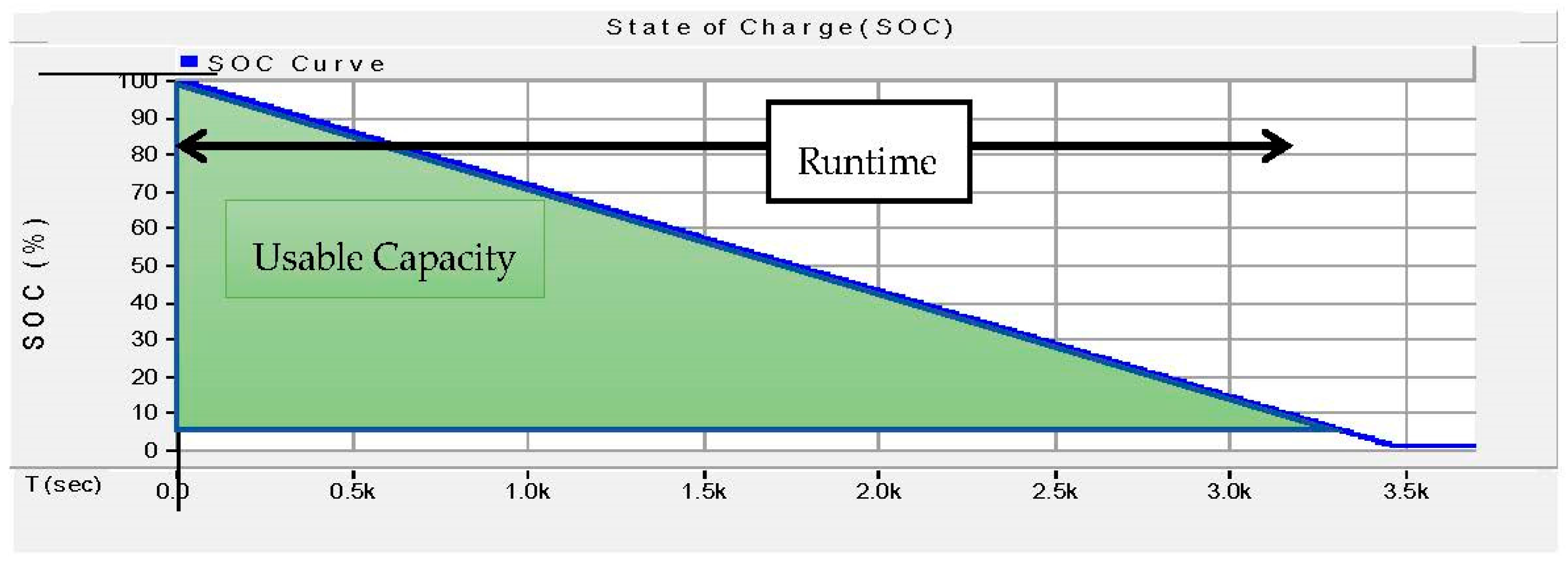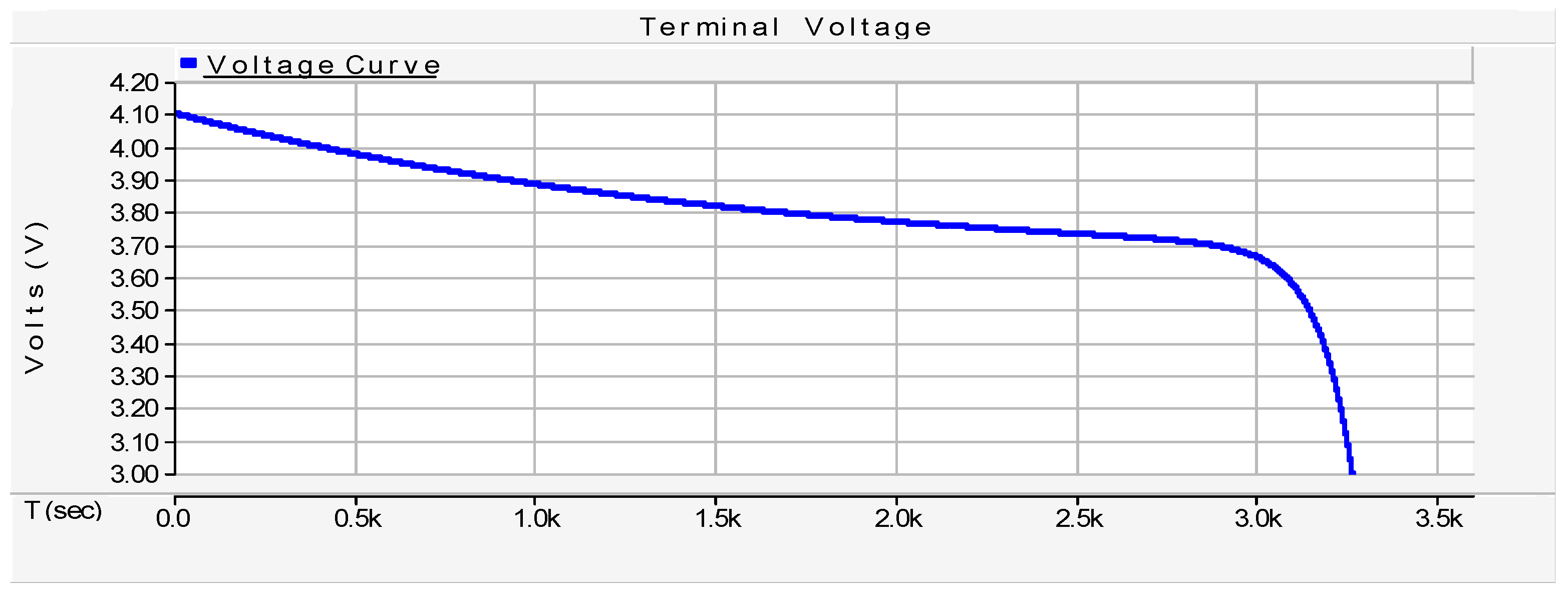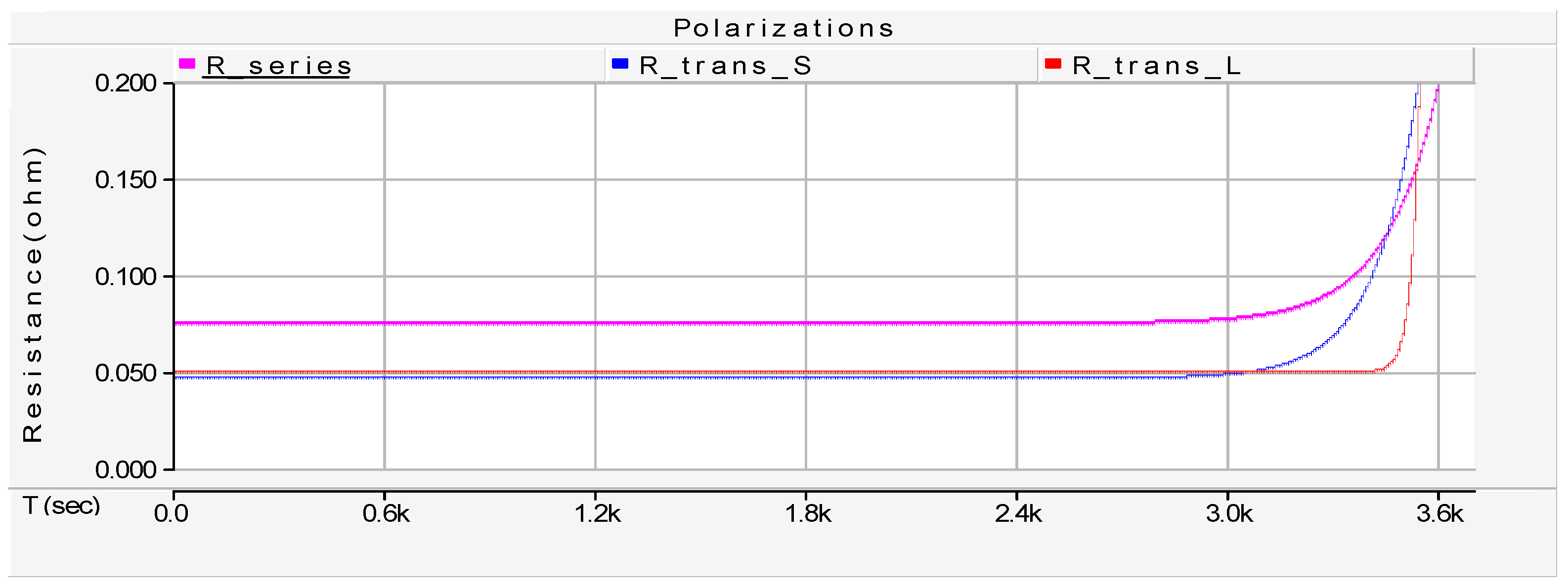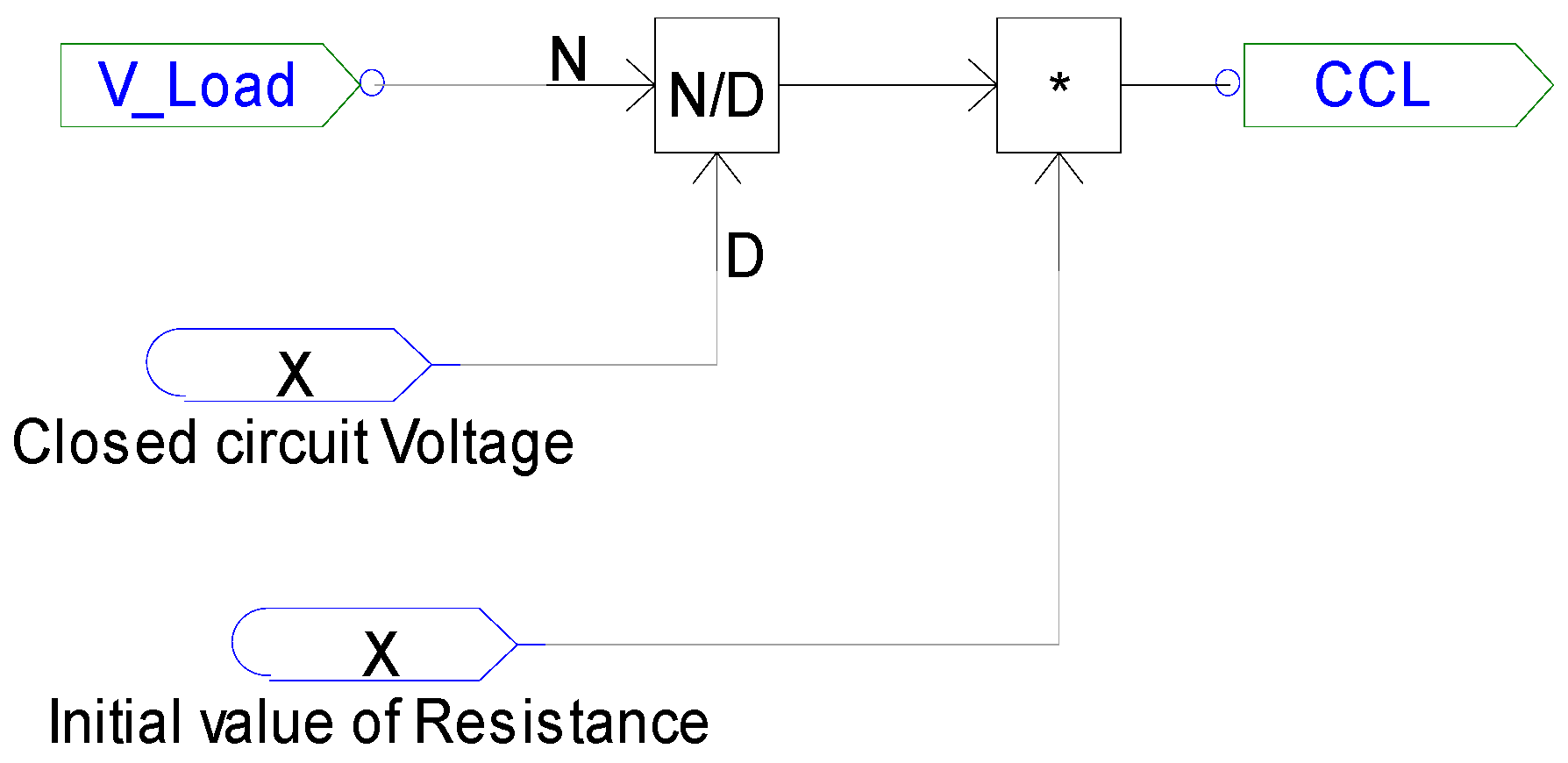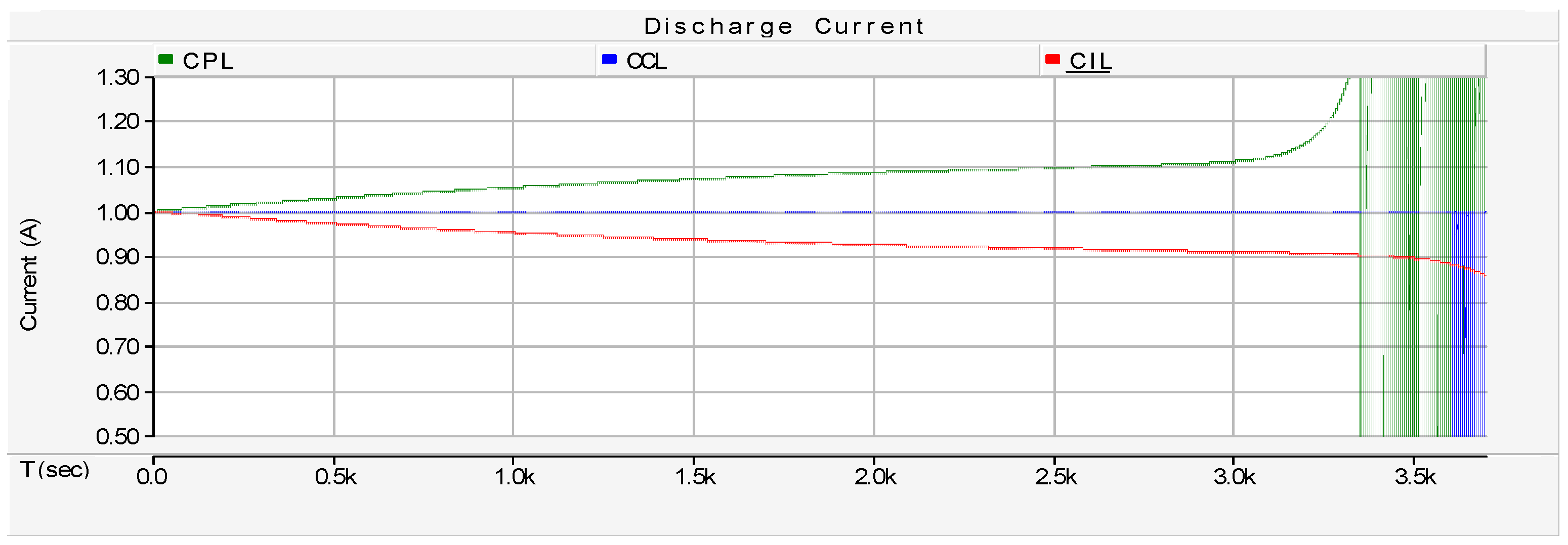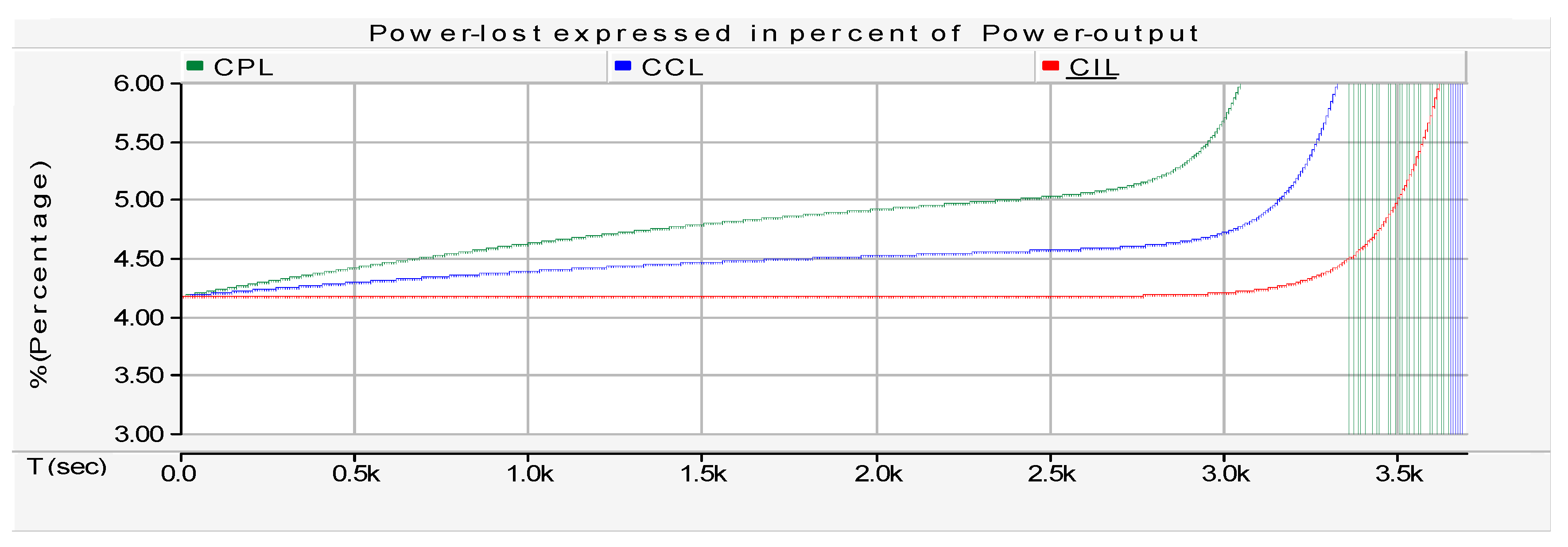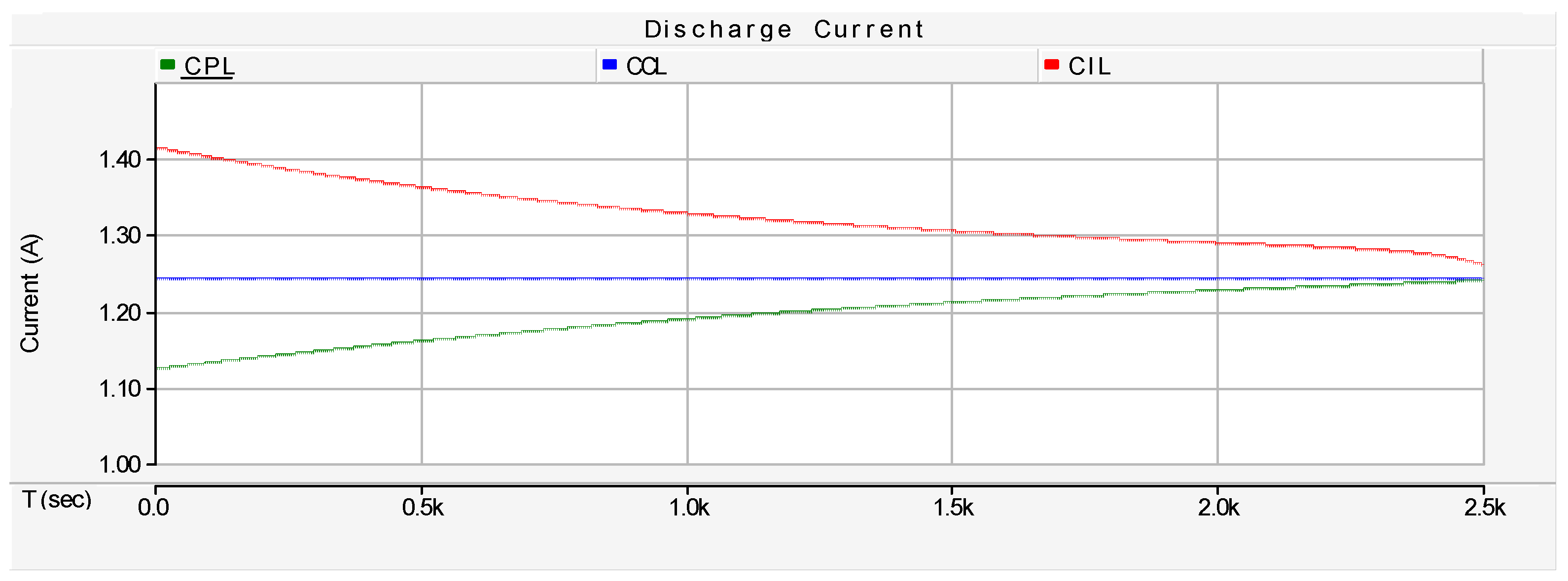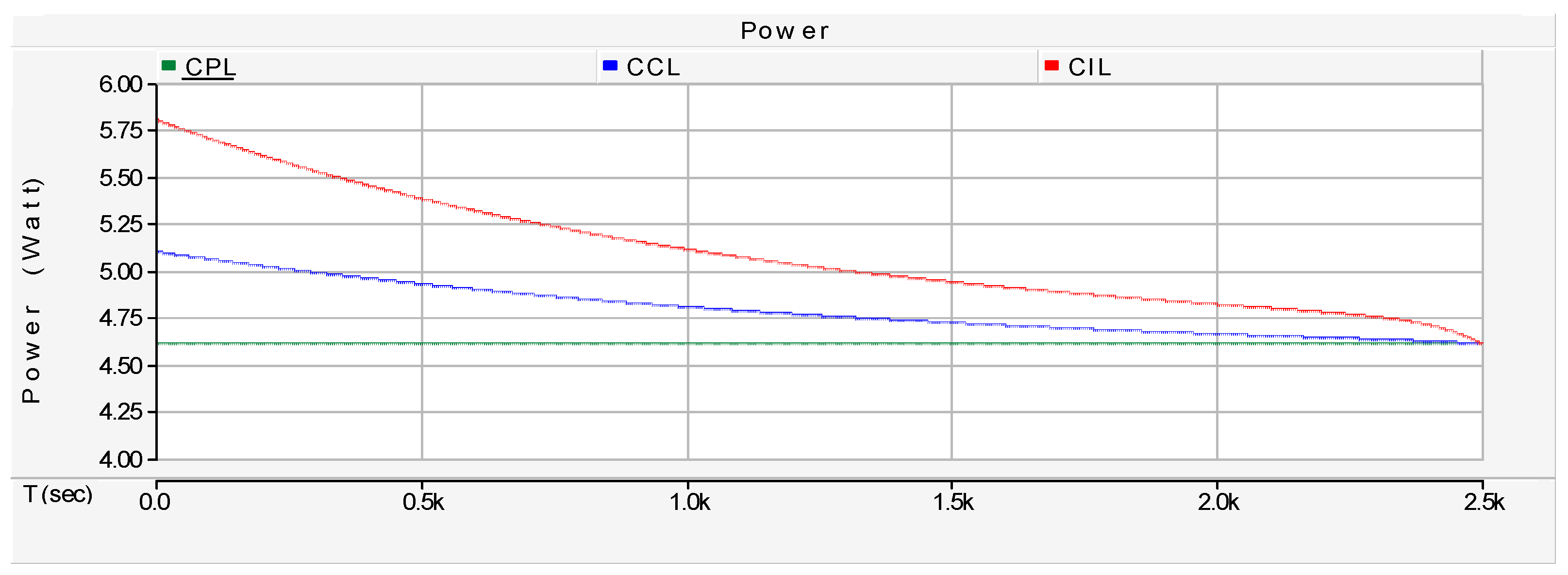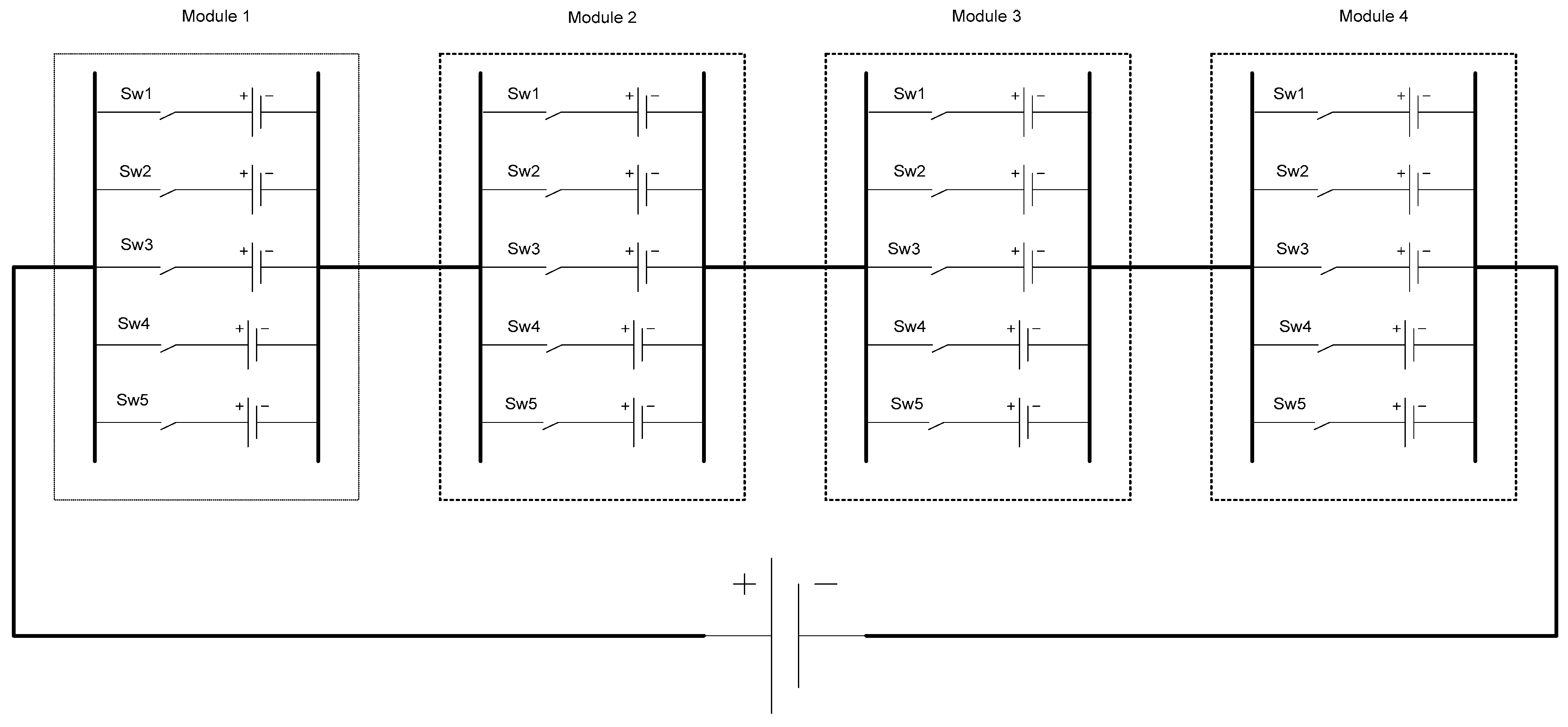1. Introduction
As remote areas are far away from the large electric systems, the use of local renewable resources to construct a microgrid (MG) is the only feasible choice. Since renewable energy resources (RES) fluctuate by nature they cannot support a practical MG concept in terms of load management, reliability and power quality without using an Energy Storage System (ESS). During the last few decades, ESSs have been studied as an important complementary technology to MGs [
1].
Some of the known energy storage technologies so far include flywheels, batteries, capacitors, fuel cells, and others. Response time and capacity expansion are two important variables to select a suitable storage technology for MGs. Rapid response requirements can be met by both batteries and flywheels but in terms of capacity expansion, battery technology is superior to flywheels [
2]. It depends upon the application being served whether the decisive factor should be the response of the battery or the capacity. Energy-applications of Battery Energy Storage Systems (BESSs) which are currently in the market recognition phase are load leveling and electrification, while frequency regulation support to utility grids by BESSs has been an on-the-horizon application of BESSs for the last couple of years. Usually energy-applications of BESS are common and appreciated in remote MGs while in case of grid-dependent (GD) microgrids, BESS use is limited to power-applications such as dispatch operation and averaging operation as explained in [
3].
It is critically required to analyze the load domain being served to ensure proper sizing, investigate the robustness to new features and accommodate new features into the source technology. Load analysis is also necessary to develop short as well as long term source technology planning [
4]. Based on the research so far it can be stated the load is always accompanied by uncertainties. These uncertainties may be associated with the state of the network, energy demand, energy cost, mode-shift and many others. Incentives due to optimization can’t be ensured without considering these uncertainties. Deterministic sizing and probabilistic sizing are two well-known approaches adopted for sizing of energy technologies, both of which use the load as input data. In the first case, certain conditions about the load are assumed, while in the second case, uncertainties in load are introduced and modelled probabilistically. Probabilistic sizing includes both short-term and long term factors [
5].
Based on the above discussion it can be inferred that load analysis is the most important step in defining the sizing framework for BESS and the aforementioned uncertainties also exist in the loads served by BESS. The literature about probabilistic sizing of BESS to address uncertainties is abundant. The probabilistic sizing of a battery storage system was conducted in [
6] to take into account the unavoidable uncertainties involved with the energy cost and energy demand. A stochastic sizing algorithm for BESS was proposed in [
7] to tackle uncertainties in life cycle cost. Wind forecast uncertainty makes the BESS with probabilistic-based sizing a complementary partner for wind energy technology as discussed in [
8]. Sizing and control of BESS for Peak Load Shaving was proposed in [
9]. A control strategy to smooth out the power from wind farm sizing of BESS was presented in [
10]. None of the above research works, whether using probabilistic or deterministic approaches, discussed the load mode and its possible impact on the sizing of batteries. The behavior of batteries for different load modes must be studied to know whether battery behavior is mode-dependent or independent of it. Well-known approaches for the analysis of the load mode are measurement-based approaches and component-based approaches. Irrespective of the approach applied, the behavior of the loads as a function of voltage can be categorized into Constant Power Load (CPL), Constant Current load (CCL) and Constant Impedance Load (CIL). Although no load falls 100% in one mode, every load has one dominant behavior. The correlation between different modes of load and the design as well as operation of the source supplying constant voltage throughout operation can be predicted and predefined. In case the voltage source changes its voltage with time, this correlation must be tracked over time and control actions be issued on the spot. The case of batteries whose voltage supply changes with time is similar. Secondly the initial lighting loads were mostly CILs, but the proliferation of power electronics has changed the way loads behave; for example electronic ballasts with constant power consumption have replaced magnetic ballasts which behave as CILs [
11]. This load transition from one mode to another has made the optimal operation and accurate sizing of BESSs a challenging task. The above-discussed issues are the motivation for this work.
This paper contributes by presenting a model-based comparative analysis of the battery behavior for different modes (MOD). It was found that the battery behavior is dependent on the MOD. Since the battery sizing and operation depend on the behavior of the battery, so the MOD is also correlated with the sizing and battery operation. The MOD is dictated by the load, so the load-aware analysis of battery behavior can impact on the sizing and BMS operation in the following way:
Minimizing the power capacity of the battery at the operational level.
Avoiding the battery damage caused by loads exceeding the rated value.
Avoiding the undersizing of the battery as undersizing is not acceptable for critical loads.
At the operational level battery utilization can be increased.
The rest of paper is distributed as follows:
Section 2 presents a basic introduction about battery behavior for the discharge cycle only.
Section 3 correlates the BMS design with battery behavior.
Section 4 develops a model more suitable for the study of battery behavior in the context of the objective of this paper.
Section 5 discusses the simple load model used for the purpose of simulation.
Section 6 presents the simulation model and procedure.
Section 7 presents the simulation results.
Section 8 proposes an idea for capacity sizing and BMS operation based on the simulation results.
3. Battery Management System (BMS) Design Correlation with Battery Behavior
As an electrochemical device, a battery acts differently under different operational and environmental conditions. This is the BMS which is responsible to keep the battery operating at high performance by tracking the changing circumstances. The design of the BMS is not an easy task as it involves a good understanding of the battery’s electrochemical characteristics. The purpose of the BMS used with portable electronics, electric vehicles (EVs) and MGs is almost the same, including optimal operation, life-time management, reliability, and safety but the conditions are different from application to application. Thus battery management systems are not interchangeable [
18]. Since the design and operational algorithm of a BMS is dictated by the behavior of battery, the analysis of battery behavior for different mode of loads is very critical. Both model-based and test-based analyses of battery behavior are available in the literature, but model-based analysis of the battery for the design of BMS is very well established in industry and academia to understand and test the dynamics quickly and efficiently compared to traditional methods that rely on using real components or test data [
19]. There have been a lot of investigations to ascertain the most suitable level of model for analysis. Both single cell and battery pack models have been investigated by various researchers. An idea of a smart BMS based on a single cell level approach has been proposed in [
20]. This idea seems more practical with portable electronics where the number of cells is limited while the BESS used with MGs has plenty of cells to fulfill high voltage and current requirements. Although a very complex hardware and communication system is required to implement the idea [
21] for BMSs used in MGs but this idea is still very significant because it provides a solid base for designing BMSs for high current and high voltage applications such as EVs and MGs. The features that need to be analyzed for high rated BMS can be done with this battery cell level system and the results can be applied to monolithic units or battery packs or modules. Comparative analysis of the battery single cell model and stacked cell model for steady state and transient conditions has been discussed in [
22]. The single cell model was found more accurate than the stacked cell model. Even for the analysis at system level it is more appropriate to conduct analysis at the cell level and extend the results to the system. The idea of extension from unit cell to battery back which starts from the Thevenin model of a single cell and analyzes the differences between the cells as a function of polarization resistance in order to extend the model has been proposed in [
23]. Similarly [
24] has also developed a method to extend the model from single cells to battery packs. It has taken the cell with minimum capacity as a focal entity to include the worst conditions in the pack. In one way or another the unit cell has behavior representative of all mega structures developed from it by series, parallel or hybrid combinations. Thus the battery unit cell model will be used for all the simulations in this paper.
4. Modified Battery Model
There are various battery models such as electrochemical models, mathematical models, electrical models and many others. Researchers have done a lot of work to define the domain of every model as a tradeoff between accuracy and complexity. For electrical engineers electrical models are more intuitive, useful and easy to handle, especially when they can be used in circuit simulators and alongside application circuits.
Among the electrical models, the selection of an appropriate model is directed by the application for which model is to be used. This paper is limited to the discharge characteristics of a battery at the cell level as a direct or indirect function of discharge current with different MOD, which is the basis for model selection. The following are some of the studies on electrical battery models with applications.
The model proposed in [
25] was used to simulate the application of BESS as an active filter. All elements included in this model are functions of the open circuit voltage of the battery, which in turn relates to the SOC. This model has less accuracy for the said application. A long term integrated model based on Giglioli’s fourth was presented in [
26] to investigate the system performance of a dynamic voltage restorer. All parameters are functions of SOC, discharge current and temperature. This model is very complex because it requires multiple types of entries such as nominal quantities, empirical parameters and experimental parameters. A battery model made from a combination of the Thevenin model and the run-time model was proposed in [
27] to study a coordinated strategy for BESS, RES and load management. This model calculates SOC as a function of the discharge current but it works accurately only for constant current. A simple voltage source was used as a battery to study the effects caused by changing parameters of microsources on the outputs at the point of common coupling, but it cannot predict the battery behavior [
28]. A model was used in [
26] to predict SOC throughout drive cycles for HEV simulations. It simulates the transient response to short duration loads of less than 1 s. Since time constants less than 1 s have no impact on the exponential dynamics of battery they can be avoided. A model proposed in [
29] has good accuracy in predicting runtime, power loss and I-V performance. This model has two modules. One module measures the I-V characteristics of battery as a function of SOC as shown graphically in
Figure 6.
The second module quantitatively estimates the SOC based on the voltage of a capacitor. In this paper we have modified this module so that it can estimate SOC as a function of discharge current. The subsystem designated for SOC estimation based on capacitor voltage was replaced with a mathematical model based on the “Coulomb Counting Method” without sacrificing accuracy. The Coulomb counting method uses the current flowing in (charging mode) and flowing out (discharging mode) of the battery and integrates this current over time in order to determine the battery capacity (Q) for SOC estimation.
This method is simple and directly takes in to account the discharge current. Calculation of SOC using Coulomb counting follows (7) and (8). SOC directly depends on discharge current
and other parameters are a function of SOC. The electrical model for SOC estimation (discharging mode) is shown in
Figure 7:
This model can be used with both Li-ion and NiMH batteries. This model is also extendable to NiCad and Lead-acid batteries. A brief summary of the characteristics of some of the batteries used for energy applications are indicated in
Table 1. Since energy applications of BESSs in remote MGs is the concern of this paper, keeping this target in view, battery selection will be governed by parameters like high specific energy, high energy density and long cycle life. Li-ion batteries have all the necessary features to become an integral part of remote MGs [
30], so we have used the parameters extracted for this model in relation to Li-ion batteries in [
29] for our simulations.
6. Simulation Model and Procedure
An acceptably accurate electrical model to reproduce the behavior of a polymer Li-ion battery was used. The model selection and modification was discussed in
Section 4 and the model is shown in
Figure 8. The internal parameters of the polymer Li-ion battery PL-383562 extracted based on experimental measurements reported in [
29] were applied to this model. The parameters are function of SOC and following the relations expressed below.
The block B measures the Voc as a function of the SOC. The circuit inside the block B is the PSCAD based model of the relation between SOC and Voc expressed by Equation.
The block A measures the SOC by integrating the current flowing out from a battery during discharging and flowing into the battery during the charging. The circuit model inside the block A is shown in
Figure 8, where Q (Ah) = battery capacity; SOCo = initial value of SOC; I Load = battery discharge current.
To simulate the battery for CIM a simple constant value a resistor was used as the load and the load models used for CCM and CPM are shown in
Figure 9 and
Figure 10, respectively. The voltage under the load condition is called closed circuit voltage. Here the closed circuit voltage is the initial value of the voltage that corresponds to the initial value of the resistance. This is a constant value while the operating voltage V_Load changes with the time depicting what actually happens in real battery applications.
The initial resistance value was taken as such a value that the initial discharge was set to 1 C for all loads and all loads will continue to flow at 1 C till the end of discharge in the case the battery supplies a constant voltage. Since the battery voltage changes with time, the loads also change following the change in battery voltage. The dependence of usable capacity on ambient temperature and self-discharge has not been included in the simulation for the following reasons.
The same battery was used for a comparative study of different MOD, so the effect of ambient temperature will be same for the different modes.
Self-discharge (2%–10%) per month was ignored for its negligible effect in polymer Li-ion batteries.
7. Results and Discussion
The main parameters of battery behavior discussed below in relation to the mode dependency are: discharge current, battery rating, SOC, capacity sizing, terminal voltage, negative impedance stability, average discharge current and efficiency.
7.1. Discharge Current and Power Rating of Battery
The rated current of a battery is determined either by testing the battery for the maximum load value or calculating the battery discharging current for maximum power of the load by using the mathematical formula given by (18):
In case the battery discharge current remains constant throughout the discharge cycle any instantaneous value can be taken to define the maximum rating. On the other hand if the battery current changes with time of use, then the maximum value of current will define the battery rating. Since the battery voltage changes with the discharge time, the corresponding load drawn by different modes will also respond to voltage changes. This behavior of discharge current in response to the change in battery voltage has been simulated for all modes of load in
Figure 11, which shows that maximum value of discharge current for CPL is greater than that of CIL or CCL. The battery should be rated for maximum power based on the CPM. Two possible and significant cases are highlighted below to explore the issues caused by mode-ignorant power rating of the battery:
Case 1: The battery was rated for maximum power based on the CPL but the load supplied by it is CIL: ehat is the issue in this case which can be solved by considering mode-aware sizing? The power capacity needed to feed the CIL is less that CPL, thus by considering mode-aware sizing at the planning level the power capacity of the battery can be minimized. The increase in the power capacity always corresponds to an increase in cost.
Case 2: The battery was rated for maximum power based on the CCL but the load supplied by it is CPL. The maximum current drawn by the CPL is greater than the rated current designated based on CCL and the battery will be damaged due to the current exceeding the rated value. Mode-aware rating compensates for these issues at the planning level. In the case of urban areas the loads are usually congested and all modes of load are observed at one location. It is very difficult to segregate each mode of load and operate separately. In case of remote areas we still have such flexibility. The residential loads in remote areas are mostly resistive loads with dominant CIL behavior. The small industrial loads are also far away from the residential loads and these loads are dominated by CPLs.
7.2. SOC and Optimal Capacity Sizing
Different objectives and constraints are taken into account to develop an optimal capacity sizing function for batteries. Due to the differences in nature of BESS applications between GD and remote MGs, the optimal battery size differs in both cases [
33]. Even for the remote MGs, the sizing considerations vary from situation to situation. Runtime is one of the determinants of capacity sizing. As discussed in
Section 2.1, the time lapse in discharging battery from fully charged state to lower limit of SOC is the runtime of battery. The runtime of the same battery is different for different MODs as simulated in
Figure 12 for a lithium battery.
Information about the proper capacity sizing of the battery can be obtained from this result. A situation was assumed below to verify the impact of runtime comparisons between different DCMs on the battery sizing. The situation is that the battery was designated to feed a critical load from 6:00 p.m. to 6:00 a.m. and it must be recharged again from 6:00 a.m. to 6:00 p.m. During 6:00 a.m. to 6:00 p.m. both the critical load and battery will be supplied by a utility. The utility is scheduled to supply only from 6:00 a.m. to 6:00 p.m. Since the load is critical the battery must supply every second from 6:00 p.m. to 6:00 a.m. which requires a proper capacity sizing. Only two cases out of the possible cases are discussed below:
Case 1: The battery capacity is sized based on CIL to feed the critical load from 6:00 p.m. to 6:00 a.m. Is the capacity sizing of battery accurate for the load other than CIL? The same battery if discharged to CPL, it will reach the end point before 6:00 a.m. and before 6:00 a.m. the utility is also not available as assumed in the developed situation. The load is critical load so this sort of situation is not acceptable. The battery will be undersized for the case.
Case 2: The battery capacity is sized based on CPL. Now the capacity will be enough to feed the critical CPL for every second from 6:00 p.m. to 6:00 a.m. This capacity will be more than enough to feed the CIL and CCL but the power rating done based on CPL will be overred for CIL and CCL. Thus a tradeoff between different DCMs must be investigated so that a battery neither faces overrating nor undersizing.
7.3. Terminal Voltage and Negative Impedance Stability
The decreasing pattern of the terminal voltage with the decrease in SOC (from left to right) is shown in
Figure 13. As the voltage increases the current must decrease and vice versa to keep the power constant in CPL. This sort of transient current behavior brings instability in open-loop systems and makes the design of controllers a challenging task in closed loop systems [
34] to which the CPL is connected. This stability issue can be resolved by making the curve for terminal voltage flat.
7.4. Discharge Current and Power Lost
The power lost
shown in
Figure 14 depends on the discharge current and internal resistance of the battery. The internal resistance for all the modes is almost same in the operational region, as can be seen in
Figure 15, so the different discharge current results in different power lost for every mode. As a result the output power is also different for every mode simulated in
Figure 16. The power-lost was calculated also in terms of percent of the power-output as shown in
Figure 17. It is observed that the more the output power required the more the power is lost such that the output power for CPL is maximum and also the power lost in CPL is maximum. In other words the battery must supply more current to increase the output power and decrease the current to decrease the output power. This increase and decrease in current is responsible for increase and decrease of power loss and output power.
7.5. Average Discharge Current and Efficiency
The efficiency of the battery is affected by the power lost
as discussed in
Section 2.5. To compare the efficiency of a battery for different modes it is necessary to know the power lost inside the battery to supply the same amount of output power. The battery DCM with minimal power lost to supply the same output power will have highest efficiency. As discussed above the internal resistance is almost same for all modes, so the discharge current shown in
Figure 18 is the only indicator to compare the power lost. The most efficient DCM will have the least discharge current for the same output power as other modes. The discharge current is minimal for the CPL (
Figure 15) which indicates the minimum power lost in CPM among the modes. Thus battery discharge in CPM has the highest efficiency. The same result can also be inferred from the power profile of the battery. To supply the same output power the initial power required for the CPM is least as shown in
Figure 19.
9. Conclusions
The behavior of the battery has been simulated for different load modes. The parameters simulated and compared for different modes of load are: average discharge current, peak discharge current, SOC, terminal voltage, maximum rating, efficiency, and negative impedance stability. It was found that the battery behaves differently from mode to mode. SOC and peak discharge current which are determinants in battery sizing were analyzed in detail and many problems which a battery might face by neglecting the mode of the load as a determinant in sizing of the battery were identified. An idea to design the battery was proposed which provides an option of flexible sizing to tackle the issues caused by mode-switching. Based on the proposed battery design and assumed load condition, a BMS algorithm was proposed which would ensure the full utilization of battery besides handling the mode-switch issues. Simply stated this paper has explored the importance of mode-aware analysis of batteries for efficient deployment of BESS. This study provides a new dimension to the analysis of battery behavior for the purpose of capacity sizing and BMS operation.
